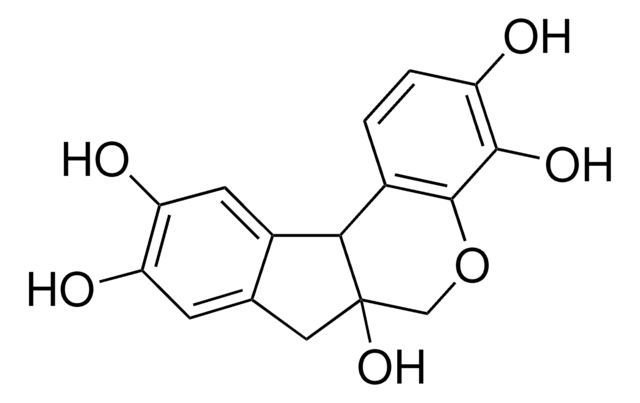1.05680
Lithium carbonate
for analysis EMSURE® ACS,Reag. Ph Eur
Synonym(s):
Lithium carbonate
About This Item
Recommended Products
grade
ACS reagent
Quality Level
Agency
reag. Ph. Eur.
product line
EMSURE®
Assay
≥99.0% (acidimetric)
form
solid
potency
525 mg/kg LD50, oral (Rat)
impurities
≤0.01% Substances insoluble in dilute hydrochloric acid
pH
10-11 (20 °C, 5 g/L in H2O)
mp
720 °C
solubility
13 g/L
density
2.1 g/cm3 at 20 °C
bulk density
250 kg/m3
anion traces
chloride (Cl-): ≤0.002%
nitrate (NO3-): ≤0.0005%
sulfur compounds (as SO42-): ≤0.2%
cation traces
Ca: ≤0.005%
Fe: ≤0.001%
K: ≤0.005%
Mg: ≤0.001%
Na: ≤0.005%
heavy metals (as Pb): ≤0.002%
storage temp.
2-30°C
InChI
1S/CH2O3.2Li/c2-1(3)4;;/h(H2,2,3,4);;/q;2*+1/p-2
InChI key
XGZVUEUWXADBQD-UHFFFAOYSA-L
Application
- Radical Polymer-based Positive Electrodes for Dual-Ion Batteries: Describes the enhancement of battery performance through the use of γ-Butyrolactone-based electrolytes in conjunction with radical polymer-based positive electrodes, highlighting advances in lithium carbonate applications in battery technology (Rudolf K, et al., 2024).
- Analysis of Trace Impurities in Lithium Carbonate: Focuses on the precision analysis of impurities within pharmaceutical grade lithium carbonate, crucial for maintaining high purity standards in pharmaceutical applications (Suárez A, et al., 2024).
- Effects of Central Metal Ion on Binuclear Metal Phthalocyanine-Based Redox Mediator for Lithium Carbonate Decomposition: Investigates the role of central metal ions in enhancing the efficiency of lithium carbonate decomposition, important for environmental lithium analysis and recovery (Yan Q, et al., 2024).
- Selective preparation of lithium carbonate from overhaul slag by high temperature sulfuric acid roasting - Water leaching: Details a method for extracting high-purity lithium carbonate from industrial waste, demonstrating an environmentally friendly approach to lithium recovery (Dong L, et al., 2024).
- Reactive molecular dynamics simulations of lithium-ion battery electrolyte degradation: Explores the degradation mechanisms of lithium-ion battery electrolytes using simulations, contributing to the development of more durable lithium battery materials (Mabrouk Y, et al., 2024).
Linkage
Analysis Note
- Assay(acidimetric): ≥ 99.0 %
- Substances insoluble in dilute hydrochloric acid: ≤ 0.01 %
- Chloride (Cl): ≤ 0.002 %
- Nitrate (NO₃): ≤ 0.0005 %
- Sulfur compounds (as SO₄): ≤ 0.2 %
- Heavy metals (as Pb): ≤ 0.002 %
- Ca (Calcium): ≤ 0.005 %
- Fe (Iron): ≤ 0.001 %
- K (Potassium): ≤ 0.005 %
- Mg (Magnesium): ≤ 0.001 %
- Na (Sodium): ≤ 0.005 %
Legal Information
Signal Word
Warning
Hazard Statements
Precautionary Statements
Hazard Classifications
Acute Tox. 4 Oral - Eye Irrit. 2
Storage Class Code
13 - Non Combustible Solids
WGK
WGK 1
Flash Point(F)
Not applicable
Flash Point(C)
Not applicable
Regulatory Listings
Regulatory Listings are mainly provided for chemical products. Only limited information can be provided here for non-chemical products. No entry means none of the components are listed. It is the user’s obligation to ensure the safe and legal use of the product.
ISHL Indicated Name
Substances Subject to be Indicated Names
ISHL Notified Names
Substances Subject to be Notified Names
Certificates of Analysis (COA)
Search for Certificates of Analysis (COA) by entering the products Lot/Batch Number. Lot and Batch Numbers can be found on a product’s label following the words ‘Lot’ or ‘Batch’.
Already Own This Product?
Find documentation for the products that you have recently purchased in the Document Library.
Customers Also Viewed
Our team of scientists has experience in all areas of research including Life Science, Material Science, Chemical Synthesis, Chromatography, Analytical and many others.
Contact Technical Service





